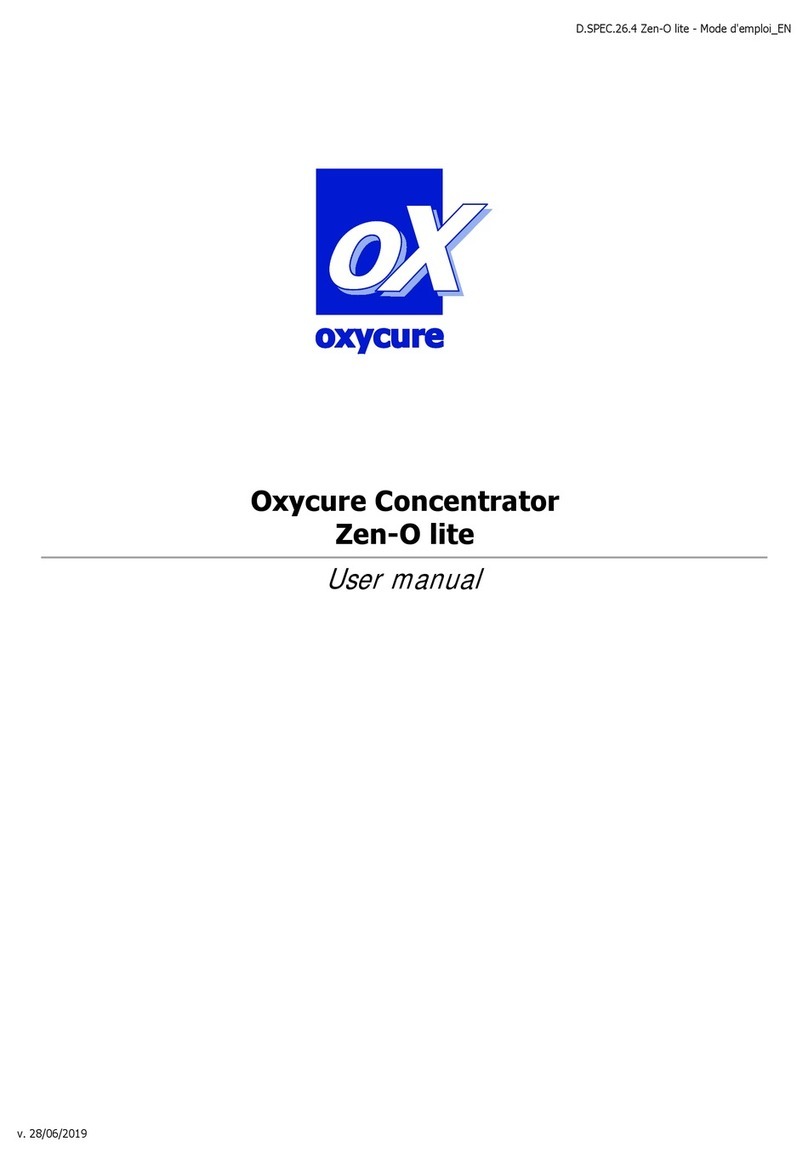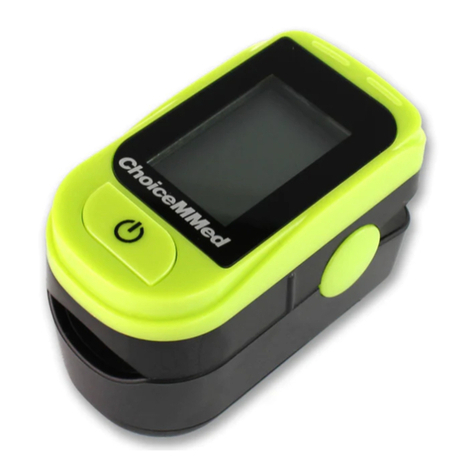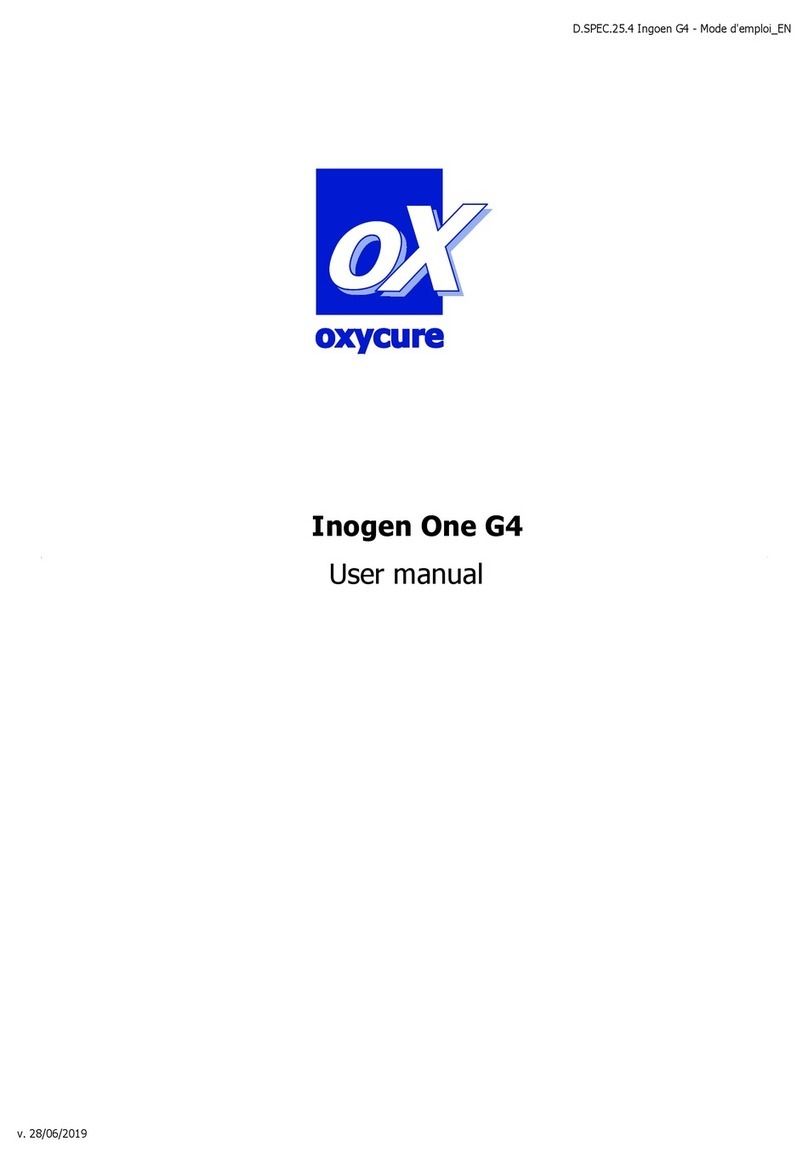
D.SPEC.05.10 Pulse oxymètre MD300-C63 - Mode d'emploi_EN
v. 28/06/2019 4
OPERATOR’S
MANUAL
V1.0C63
Fingertip Pulse Oximeter
General Description
Oxygen Saturation is a percentage of Oxyhemoglobin (HbO2) capacity, compounded with
oxygen, by all combinative hemoglobin (Hb) capacity in blood In other words, it is
consistency of Oxyhemoglobin in blood. It is a very important parameter for the Respiratory
circulation System. Many respiratory diseases can result in oxygen saturation being lowered
in human blood. Additionally, the following factors can reduce oxygen saturation: Automatic
regulation of organ dysfunction caused by Anesthesia, Intensive Postoperative Trauma,
injuries caused by some medical examinations. That situation might result in light-
headedness, asthenia, and vomiting. Therefore, it is very important to know the oxygen
saturation of a patient so that doctors can find problems in a timely manner.
The fingertip pulse Oximeter features small size, low power consumption, convenient
operation and portability. It is only necessary for a patient to put one of his fingers into the
fingertip photoelectric sensor for diagnosis, and a display screen will show oxygen
saturation. It has been proven in clinical experiments that it also features high precision and
repeatability.
Measurement principle
Principle of the Oximeter is as follows: A mathematical formula is established making use of
Lambert Beer Law according to Spectrum Absorption Characteristics of Reductive
hemoglobin (RHb) and Oxyhemoglobin (HbO2) in glow and near-infrared zones. Operation
principle of the instrument: Photoelectric Oxyhemoglobin Inspection Technology is adopted
in accordance with Capacity Pulse Scanning and Recording Technology, so that two beams
of different wavelength of lights (660nm glow and 940nm near infrared light) can be focused
onto a human nail tip through a clamping finger-type sensor. A measured signal obtained
by a photosensitive element, will be shown on the Oximeter’s display through process in
electronic circuits and microprocessor shown on the Oximeter’s display through electronic
circuits and a microprocessor.
Diagram of Operation Principle
1. Red and Infrared-ray Emission Tube
2. Red and Infrared-ray Receipt Tube
Precautions for use
1Do not use the pulse oximeter in an MRI or CT environment
2Do not use the pulse oximeter in situations where alarms are required.
3Explosion hazard: Do not use the pulse oximeter in an explosive atmosphere.
4The pulse oximeter is intended only as an adjunct in patient assessment. It must be
used in conjunction with other methods of assessing clinical signs and symptoms.
5Check the pulse oximeter sensor application site frequently to determine the positioning
of the sensor and circulation and skin sensitivity of the patient.
6Do not stretch the adhesive tape while applying the pulse oximeter sensor. This may
cause inaccurate readings or skin blisters.
7Before use, carefully read the manual.
8The pulse oximeter has no SpO2alarms; it is not for continuous monitoring, as indicated
MD300C63





























